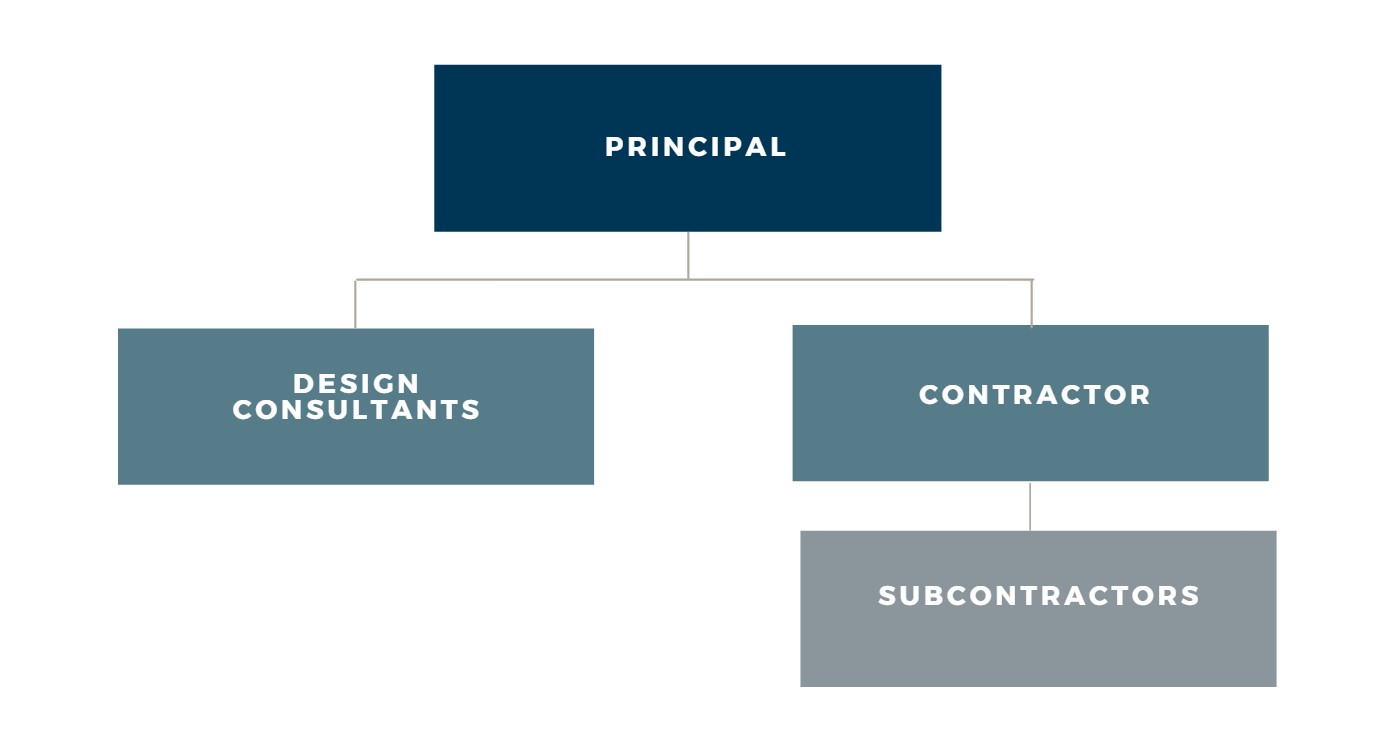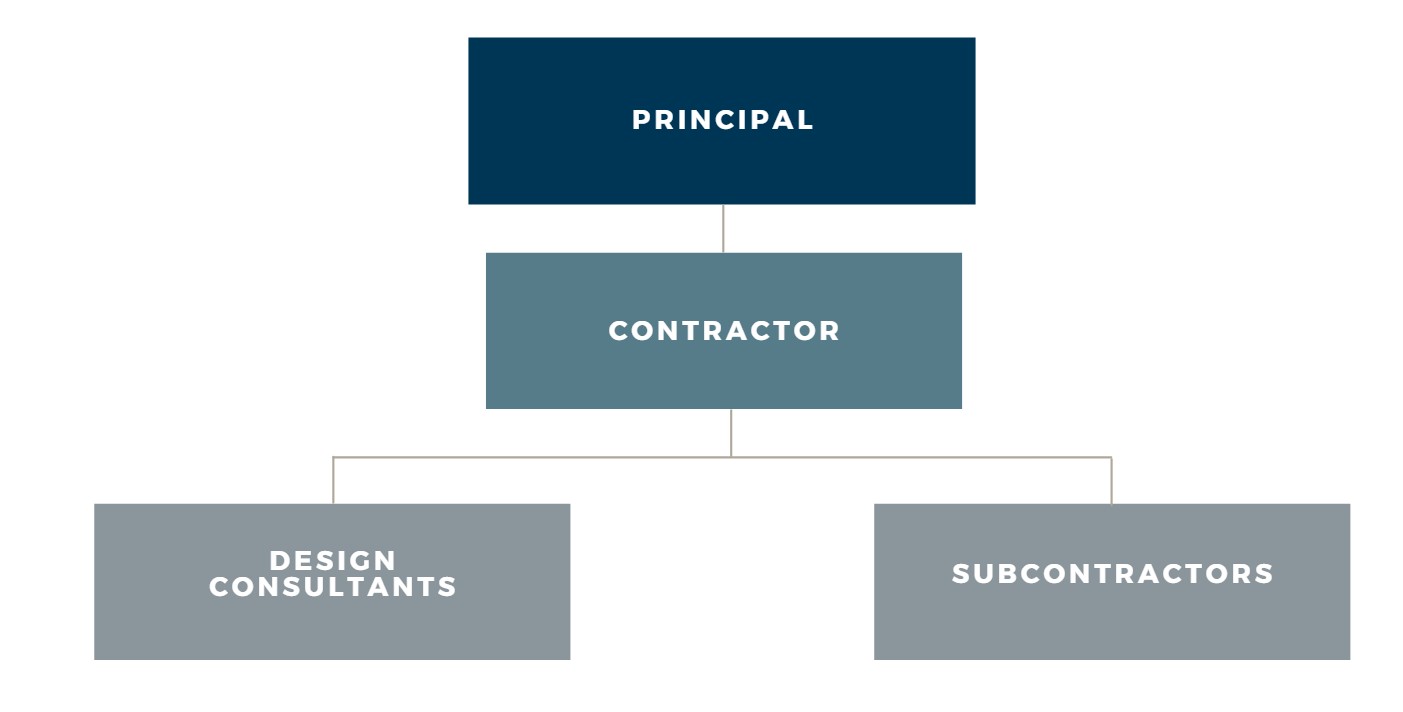key takeaways
Why your contract structure matters
The right contract structure will save you time and cost. Engaging early to plan how a project will be structured contractually can help with scoping, budgeting and risk management. The right contract structure can help to capitalise on opportunities and to reduce the likelihood of significant disputes.
Contract selection and preparing an efficient allocation of risk and responsibility within that framework forms the backbone of a construction project. It's also critical to successfully debt financing a project.
When construction projects fall into dispute, the legal costs involved can be significant.
At that point, there can be little option other than to pursue a recovery or defend an action. The costs involved in dispute resolution can be significant. In many cases, these costs could have been ameliorated or avoided through the contract itself.
What are common contract structures for construction projects?
There are many standard and bespoke contracting arrangements used in the construction and infrastructure industry. The characteristics of the following three structures are present in many projects.
Construct (Traditional)
FEATURES AND CONSIDERATIONS
DESIGN AND CONSTRUCT
FEATURES AND CONSIDERATIONS
construction management
features and considerations
Download
PDF Version
What factors guide contract structure selection?
Set out in the table below are a number of comparative issues that can assist with contract structure selection. There are also multiple pricing and payment options that can be paired with contract structure selections.
Issue | Construct | Design and Construct | Construction Management |
|---|---|---|---|
Contractor wraps the project risks | Cell | X | Cell |
Principal retains significant control of design | X | Cell | X |
Construction work quality | X | X | X |
Integration of multiple complex works | X | X | Cell |
Highest level of bankability | Cell | X | Cell |
Highest level of flexibility | Cell | Cell | X |
Certainty of price | X | X | Cell |
Clarity of remedies | Cell | X | Cell |
Most suitable for experienced Principals | Cell | X | Cell |
Longest project time (full tender documentation required), with design and construction in series | X | Cell | Cell |
Reduced project time, with design and construction in parallel | Cell | X | X |
Highest degree of Principal involvement | Cell | Cell | X |
Current Trends In the Market
In a market where land values have been increasing, Principals have favoured Design and Construct contract structures in development projects. These contract structures are being used to:
- Improve bankability;
- Improve access to debt finance; and
- Fast-track the design and construction elements of a project in parallel so that project returns can be realised.
A key challenge in a fast-moving market is ensuring that sufficient lead time is included to adequately prepare and negotiate contracts to address risks. At the time of writing, risks of particular note include COVID-19 related risks, cost escalation and availability of certain materials and subcontractor resources.
Achieving bankability
Where projects are being debt-financed, Principals need to ensure at the outset that the contract structure is sufficiently robust to satisfy their financier’s requirements for funding. It's imperative that Principals ensure all project contracts are prepared on bankable contract terms which tie into the funding structure and will meet any conditions precedent to financial close. These include all construction works packages and the design, and technical and project management appointments.
While financiers’ requirements can vary depending on the project size and market, their due diligence will focus on key lender issues impacting the borrower’s risk profile. These include:
- Contractual liability limits;
- Price and program certainty through the project delivery;
- The adequacy of the security package, project insurances;
- Control over scope changes and variations;
- Performance standards and warranties; and
- Termination rights.
Principals should work with their financiers from project conception to understand expectations around funding and to address the requirements of their financiers in contract documents.
conclusion
There is a wide selection of construction contract structures that can be deployed. Choosing the right structure will depend on factors, including the control a party seeks over issues of time, cost, and quality, as well as the requirements of finance.
Investing in the right contract structure and spending time to work through project opportunities and risks at the outset can save significant time and money during delivery and ameliorate the risk of disputes.
get in touch with us!
Our Construction and Infrastructure team has experience in:
- Structuring, drafting and negotiating contracts;
working with clients and contractors to prepare and respond to tender documentation; - Carrying out reviews for lenders, Principals and Contractors;
- Advising on loan arrangements for lenders and Principals; and
- Due diligence for lenders and Principals, including in respect of contract structures.
The next time you're looking at developing or responding to a proposed contract structure for a project, please contact us. We'd love to discuss your project and are always delighted to share our thoughts and insights on the market.






